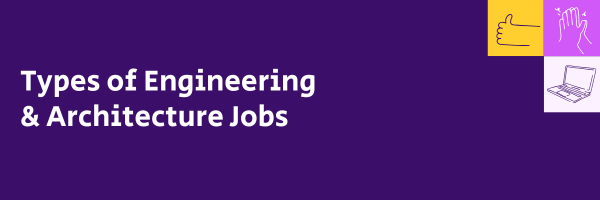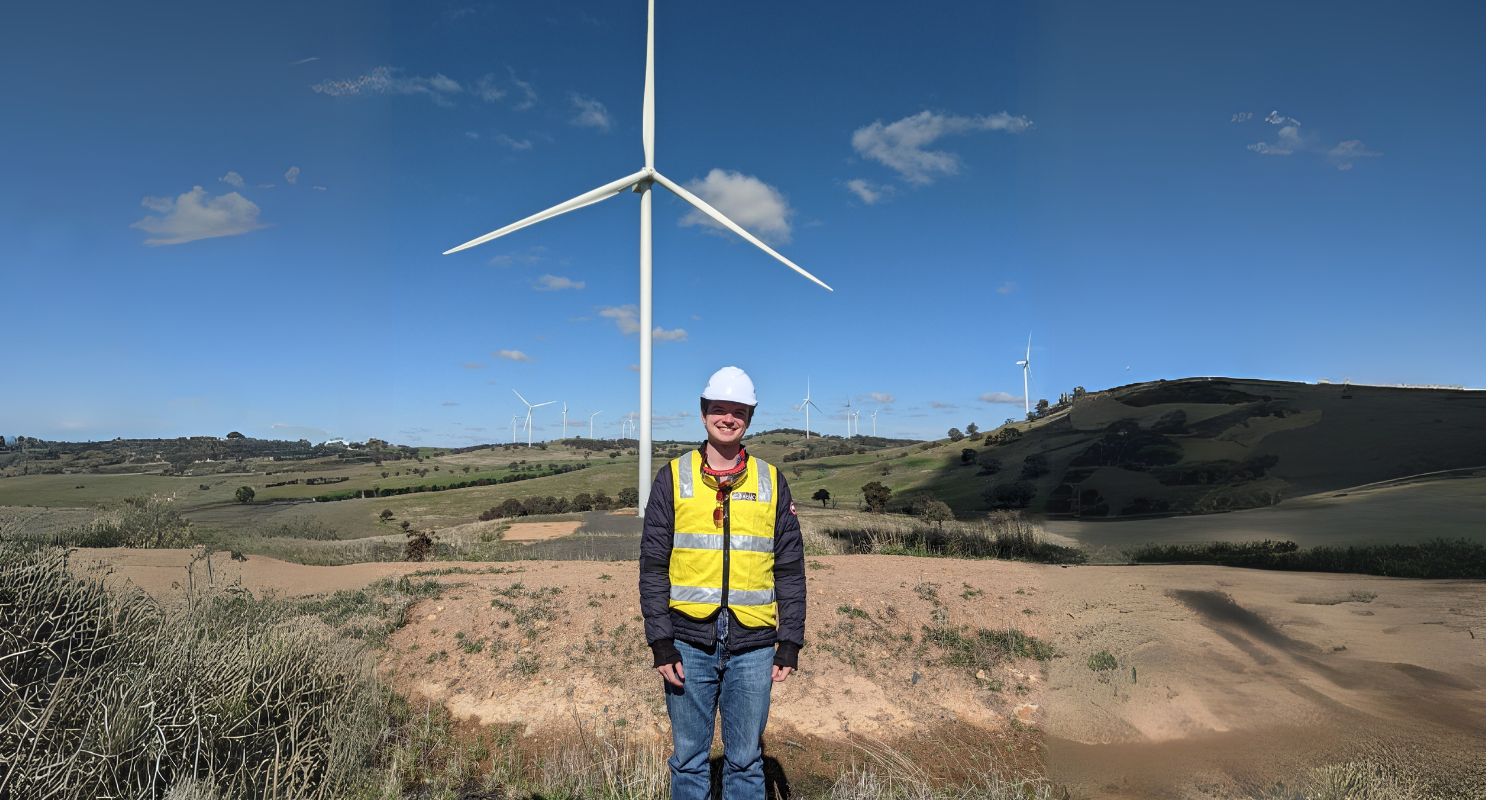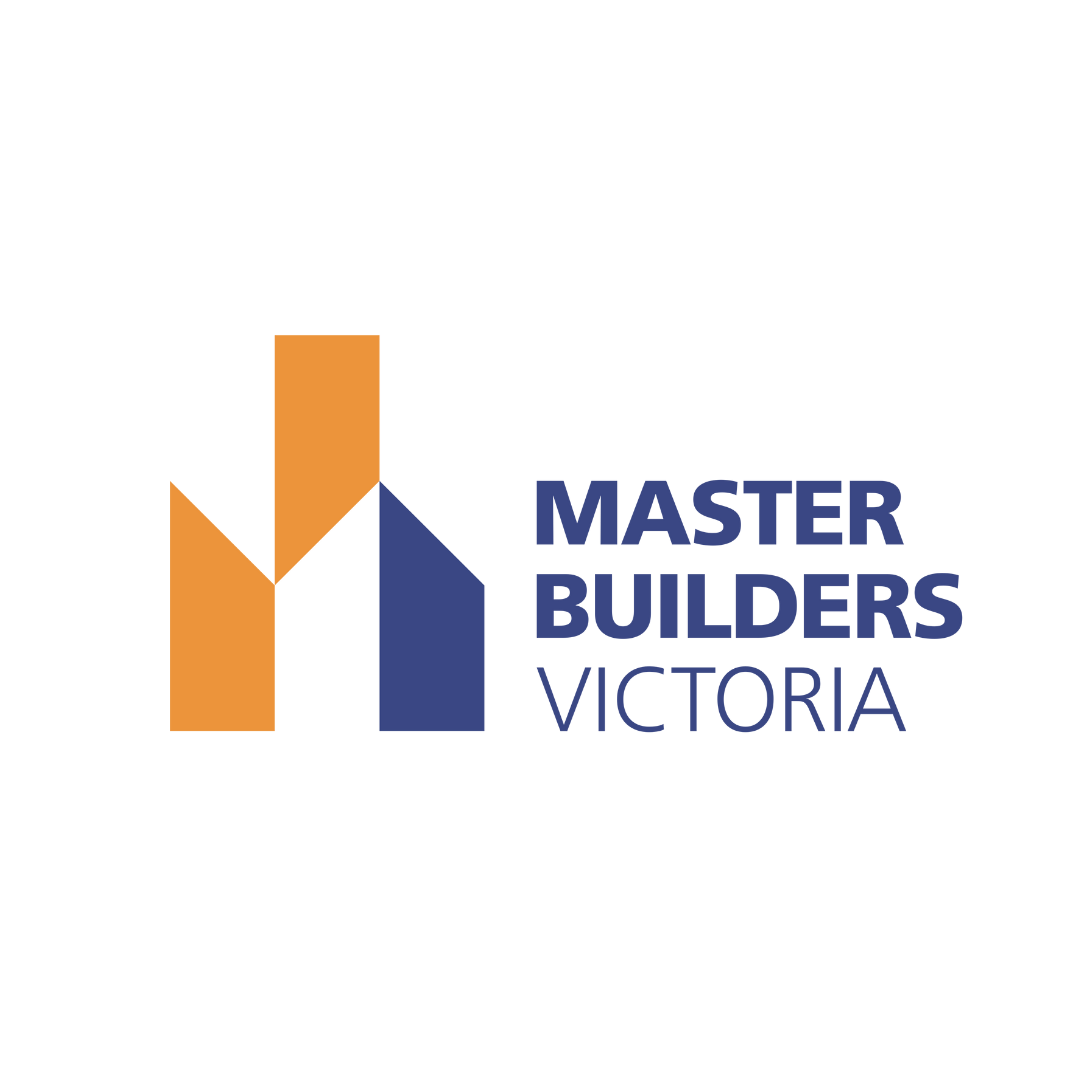Back to employers
Engineering & Architecture
Are you someone who loves to solve problems, design innovative solutions, and bring ideas to life? If so, an engineering career or an architectural career might be your perfect fit! These dynamic fields offer a blend of creativity, technical expertise, and the opportunity to make a tangible impact on the world around us.
Engineering careers span various disciplines, from civil and mechanical to electrical and environmental engineering. Similarly, architecture careers involve designing and planning buildings and spaces that serve a purpose and look aesthetically pleasing. Both industries are super important in shaping our environment and addressing the needs of entire communities!
In this guide, we’ll explore the engineering and architecture industries, the types of jobs available, industry insights, salary expectations, qualification pathways, essential skills, and where to find more information. So, what are you waiting for? Let’s dive in!

What Are Engineering and Architecture Careers?
Engineering and architecture careers are all about turning ideas into reality; whether it’s building a bridge that spans a river, designing a sustainable high-rise, or developing smarter transport systems. These careers sit at the intersection of problem-solving, creativity, and technical knowledge, and offer endless possibilities to shape the world around you! Want to dive a little deeper? You got it!
Engineering Careers
Engineering careers focus on using science, maths, and technology to design, develop, and improve everything from machines and materials to systems and structures. Engineers ask the big questions, like how we can produce cleaner energy, build safer cities, or create faster technologies, and then use their skills to create real-world solutions.
What makes the engineering industry exciting is the range of diverse jobs in the sector. Engineers can work in robotics, aerospace, biomedical devices, construction, or even artificial intelligence (talk about future-proof careers)! No two engineering jobs are the same, which means you could be working on a mining site in Western Australia or helping design renewable energy systems in an urban lab.
At its heart, an engineering career is about making things work better, more efficiently, more safely, and more sustainably!
Architecture Careers
Architecture careers revolve around designing the spaces we live, work, and play in. But it’s not just about drawing buildings that look cool (although that’s definitely part of it). Architects also think about how people interact with spaces, how those spaces impact the environment, and how to make them both functional and inspiring.
An architecture career blends creativity with practicality. You’ll spend time dreaming up innovative ideas and then figuring out how to make them possible while considering everything from materials and budgets to environmental regulations and construction logistics.
Architects don’t work alone, either. They collaborate with engineers, urban planners, builders, and clients to ensure every project comes together successfully. Essentially, it’s a career that’s just as collaborative as it is visionary.
Why These Careers Matter
From sustainable housing and smart cities to renewable energy grids and climate-resilient infrastructure, engineering and architecture careers are critical to the future of Australia and the planet. They’re about more than just jobs; they’re about building the future that you want to live in!
What You Could Do
So, you’re curious about pursuing an engineering career or an architecture career, but not sure what your day-to-day might actually look like? The great news is that these industries are full of exciting, diverse roles that suit all kinds of interests and skills. Whether you’re into solving complex problems, designing incredible spaces, or improving how things work, there’s a role in the engineering industry or architecture industry just waiting for you.
So, with that out of the way, let’s dive into some of the most popular (and coolest) architecture and engineering careers you could pursue!

Civil Engineer
Civil Engineer Average Salary: $95,000 – $115,000
Civil engineers are the geniuses behind the infrastructure we use every single day; think roads, bridges, airports, tunnels, and even water systems! In this engineering career, you’ll plan and oversee the construction of essential public works, making sure they’re strong, safe, and built to last. Civil engineers also work closely with environmental concerns, often creating solutions to reduce the impact of construction on ecosystems.
Mechanical Engineer
Mechanical Engineer Average Salary: $80,000 – $100,000
If you’ve ever looked at a car engine, an elevator, or even a wind turbine and wondered how it works, mechanical engineering might be for you. This branch of the engineering industry is all about designing, developing, and maintaining machines and mechanical systems.
Essentially, mechanical engineers are problem-solvers and inventors; they take big ideas and turn them into functioning technology. You could end up working in fields like automotive, aerospace, energy, or even biomedical devices. In short, if it moves or has parts that move, there’s probably a mechanical engineer behind it.
Electrical Engineer
Electrical Engineer Average Salary: $105,000 – $125,000
Electrical engineers work with all kinds of electricity: generation, distribution, and usage. From designing circuits and power systems to developing cutting-edge electronics and renewable energy solutions, electrical engineering jobs are at the heart of modern technology. This career might see you working on electric vehicles, smart grids, solar power systems, or even space communications. If you’re fascinated by how electricity powers the world, this could be the engineering career for you.
Environmental Engineer
Environmental Engineer Average Salary: $80,000 – $100,000
Passionate about the planet? Environmental engineering blends science, sustainability, and problem-solving to tackle major environmental challenges. You’ll work on projects like waste treatment, air and water pollution control, and sustainable building design.
This role is becoming increasingly important as we all seek innovative ways to reduce carbon footprints and combat climate change. If you want a career that protects both people and the planet, this is a standout option in the engineering industry.
Software Engineer
Software Engineer Average Salary: $100,000 – $120,000
Let’s face it, our world is getting more and more ‘techy’ every single day, so it comes as no surprise that software engineers are in high demand. These tech-savvy pros design, code, and maintain everything from apps and websites to large-scale operating systems and cloud services.
Unlike other engineering careers that focus on physical systems, software engineers build the digital tools that power our daily lives, from social media platforms to banking apps and self-driving cars! If you love logic, puzzles, and problem-solving, you’ll thrive in this part of the engineering industry.
Architect
Architect Average Salary: $95,000 – $115,000
Architects are the creative visionaries of the architecture industry. They design buildings and spaces that are not just functional, but beautiful and inspiring. From homes and schools to skyscrapers and stadiums, architects combine real-life artistry with technical knowledge to bring concepts to life.
Architects think about everything: how a building looks, how it works, how safe it is, and how sustainable it can be. So, if you’re someone who sketches designs on napkins or loves visualising spaces, this architecture career might be your perfect match.
Landscape Architect
Landscape Architect Average Salary: $80,000 – $100,000
Love the outdoors and have an eye for design? Landscape architects plan and design open spaces like parks, gardens, waterfronts, and city plazas. They make sure public and private outdoor areas are ready for their local communities to enjoy!
This architecture career is about enhancing how people interact with their environment: creating spaces that encourage connection, relaxation, and sustainability. You’ll work with natural elements like plants and water, while also considering accessibility and climate resilience. It’s exciting stuff!
Urban Planner
Urban Planner Average Salary: $85,000 – $95,000
Urban planners help design entire communities. They decide where houses go, how transport systems link up, and how spaces can evolve as populations grow. Urban planners are key players in shaping cities that are efficient, inclusive, and sustainable.
This career is perfect if you’re passionate about how people live and move through spaces, and want to be part of the big-picture thinking behind smart, liveable cities. It also bridges the engineering industry and the architecture industry, making it a dynamic and influential role.
Interior Architect
Interior Architect Average Salary: $75,000 – $90,000
Interior architects focus on the inside of buildings, but they do way more than just pick colours and furniture. They design internal layouts that make spaces comfortable, efficient, and aligned with how people use them.
Whether it’s a hospital, a school, or a home, interior architects think about lighting, acoustics, spatial flow, and materials. It’s a hands-on, creative architecture career that merges aesthetics with practical, human-centred design.
Insights into the Engineering & Architecture Industry
Wondering what the engineering industry and architecture industry really look like behind the scenes? You’re in the right place!
These industries aren’t just full of fascinating careers; they’re also growing fast, evolving with new technology, and opening doors for young people from all backgrounds. Whether you’re planning to dive into exciting engineering jobs or aiming for a super creative architecture career, it’s important to understand how these fields are changing, who’s hiring, and where the opportunities are.
From job growth and graduate employment trends to gender representation and innovation, we’re about to give you a deeper look at what’s happening right now in the world of engineering and architecture careers, so you can kickstart your career with confidence!

Industry Growth
The engineering industry in Australia was at its strongest during COVID, when the value of engineering construction activity peaked at $42.5 billion. However, there is still a lot going on in the sector, driven by investments in infrastructure, renewable energy, and technology! As of March 2024, the value has dropped to a (still impressive) $25.1 billion, and while that may seem like a considerable dip, it still positions the engineering industry as a true force in the Australian job landscape!
Unfortunately, there are a few challenges facing the architecture industry lately, including “rising costs, builder insolvency and challenges related to regulatory compliance.” However, the future still seems promising, as a consistent volume of project proposals indicates comforting activity levels in this exciting sector. In short, if you want to get into architecture, there’s no real need to stress!
Hiring Trends
According to The Australian Engineering Labour Market, while engineering job vacancy levels can be a little turbulent, engineers are, overall, still very much in demand, making the engineering industry a future-proof option for those looking for job security!
Employment for architects is also projected to grow very strongly through to 2026, reflecting the increasing demand for skilled professionals in this field. This growth is driven by factors such as urban development, infrastructure projects, and a focus on sustainable design.
For those entering the engineering or architecture industry, the outlook is encouraging. The combination of strong employment growth, diverse opportunities, and the industry’s pivotal role in shaping the built environment makes these industries compelling career choices for anyone planning their future careers.
Gender Split
The engineering industry continues to face challenges in achieving gender diversity (but it’s a problem that young women in STEM can totally help solve)! As of 2024, only 13% of engineers in Australia are female. Efforts are being made to encourage more women to pursue engineering careers and address workplace inequalities, but it takes systematic change to see real growth, so we all have to get involved!
In the architecture industry, the gender pay gap remains a concern, with a median average of 15.4% (even though the architecture industry consists of 54% women). Again, this is a societal issue, so we all need to put in the work to fix it!
Average Salary for Engineering & Architecture Careers
Let’s talk money! While passion and purpose are super important when choosing a career, it’s also totally okay to wonder: “How much could I earn in the engineering or architecture industry?”.
The good news? Both engineering and architecture careers can offer solid earning potential, with salaries growing as you gain more experience, skills, and qualifications. Whether you’re designing bridges, coding smart systems, or creating sustainable cityscapes, your work can be both meaningful and financially rewarding.
To help you out, we’ve broken down what you can expect to earn starting out, mid-career, and further down the track, plus how different specialties across the engineering industry and architecture industry can affect your pay. Let’s crunch the numbers!
- Civil Engineer Average Salary: $95,000 – $115,000
- Mechanical Engineer Average Salary: $80,000 – $100,000
- Electrical Engineer Average Salary: $105,000 – $125,000
- Environmental Engineer Average Salary: $80,000 – $100,000
- Software Engineer Average Salary: $100,000 – $120,000
- Architect Average Salary: $95,000 – $115,000
- Landscape Architect Average Salary: $80,000 – $100,000
- Urban Planner Average Salary: $85,000 – $95,000
- Interior Architect Average Salary: $75,000 – $90,000
While those figures sound pretty promising, keep in mind that salaries can vary quite a bit, especially when you’re just starting out. Entry-level roles might offer lower pay at first, but that’s totally normal. Salaries often ramp up as you gain experience.
A few key things can impact how much you earn, such as:
- The specific area of the industry you’re working in.
- Your job title and how senior your role is.
- How much hands-on experience you’ve built up.
- Where you’re based.

Qualifications and Entry Pathways
Ready to kick off your journey into the engineering industry or architecture industry, but not sure where to start? Don’t worry, we’ve got you covered.
There are a few different ways you can break into engineering and architecture jobs, and while university is the most common path, it’s definitely not the only one. Whether you’re set on getting a degree or looking for alternative pathways like apprenticeships, cadetships, or TAFE courses, there’s an option to suit every learner.
So, buckle up; in this section, we’ll take a closer look at the qualifications that can lead to an exciting engineering career or architecture career, what you’ll learn along the way, and just how far these qualifications can take you.
 Degrees for Engineering & Architecture Careers
Degrees for Engineering & Architecture Careers
Pursuing a degree is a common pathway into engineering and architecture careers. These programs provide foundational knowledge and practical skills essential for professional practice. Chances are, if you’re interested in the industries, you’ll have fun completing them too! Looking for a more specific answer? Check out these popular university pathways:
Bachelor of Engineering
Duration: 4 years
The Bachelor of Engineering is your classic launchpad into the world of engineering jobs. It’s a hands-on, challenging, and deeply rewarding degree that mixes maths, science, problem-solving, and practical design work.
Most universities offer specialised streams like mechanical, electrical, civil, software, or environmental engineering, so you can tailor your studies to suit your passions and career goals. Throughout your degree, you’ll work on real-world projects, collaborate with other students, and gain technical skills that are in high demand across the engineering industry!
Bachelor of Architecture
Duration: 3 years
If you’ve got a creative eye and a love for design, the Bachelor of Architecture could be your perfect fit! This degree is the foundation for anyone wanting to enter the architecture industry and work towards becoming a licensed architect.
A Bachelor of Architecture degree blends artistic flair with practical and technical skills. You’ll spend a lot of time designing, drawing, and using digital modelling software to create spaces that are functional, beautiful, and sustainable. Architecture students also explore history, theory, sustainability, and urban planning to fully understand how the built environment shapes our lives.

Best Places to Study
Choosing where to study is a big decision, but it’s also an exciting one! Australia is home to some of the world’s leading universities and institutions that offer top-tier programs in engineering and architecture. So, whether you’re aiming to dive into a hands-on engineering career or dream of designing iconic buildings as part of an architecture career, finding the right uni can help you build the foundation for success.
Each university has its own strengths: some are known for cutting-edge research facilities, others for world-class design studios, industry partnerships, or real-world internship opportunities. The best part? There’s no one-size-fits-all. Whether you’re keen to study in a big city, regional area, or even online, there’s a place that suits your goals, learning style, and lifestyle. Ready to check out your options?
 Alternative Engineering & Architecture Pathways
Alternative Engineering & Architecture Pathways
Uni isn’t the only way to launch into an exciting engineering or architecture career: there are plenty of alternative routes to get you where you want to go. These options can be great if you prefer hands-on learning, want to work while you study, or are still figuring out what area of the engineering industry or architecture industry suits you best. Intrigued? Check out these top alternative pathways:
Top Skills For Aspiring Engineers & Architects
Whether you’re dreaming of building bridges, designing skyscrapers, or developing the next generation of smart cities, you’ll need more than just a degree to make it in the engineering or architecture industry. To thrive in these fast-paced, creative, and technical fields, you’ll need a blend of practical, professional, and personal skills.
The best part? You can start building many of these skills right now: at school, in part-time jobs, through hands-on projects, or even by playing around with design software or coding platforms at home! So, let’s dive into the top skills you’ll need to kick-start your engineering career or architecture job.
Problem-Solving
Both engineers and architects are professional problem-solvers. Whether it’s figuring out how to design a bridge that can withstand an earthquake or creating a home that stays cool in summer without using heaps of energy, problem-solving is at the heart of both fields.
Technical Skills
For engineering jobs, you’ll often be working with technical tools, mathematical models, and specialised software, and for an architecture career, you’ll be learning digital design programs. Developing strong technical skills will help you design smarter, build safer, and communicate your ideas clearly with teams and clients!
Creativity & Innovation
Careers in engineering and architecture both require tons of creativity! You’ll need to think about form, function, and the future. Architects must design spaces that are visually stunning and practical. Engineers must come up with innovative ways to solve real-world problems with limited time, space, or budget. Creative thinking will help you stand out and design smarter, more sustainable solutions.
Teamwork & Collaboration
In both the engineering industry and the architecture industry, projects are rarely done solo. You’ll work with a mix of people: engineers, builders, clients, contractors, government bodies, and other architects. Being able to listen, share ideas, take feedback, and work through challenges as a team is essential to getting the job done right.
Attention to Detail
Precision matters, especially when lives, safety, or large amounts of money are involved. Architects and engineers both need to double-check their work, spot errors in blueprints or code, and ensure designs meet all regulations and standards. Whether you’re drafting plans, writing code, or reviewing a construction site, being detail-oriented is a massive asset.

Where to Learn More
Want to dive deeper into the world of engineering jobs and architecture jobs? You’re just getting started!
The best way to find your fit in the engineering or architecture industry is by exploring, asking questions, and getting inspired by real-life stories and experiences. Whether it’s through online resources, career expos, student webinars, or talking to people already working in the field, there are so many ways to keep learning.
To help you out, we’ve rounded up tonnes of resources from helpful websites to industry bodies, and programs built just for high school students:

Energising Your Future: Engineering Careers at AEMO
Unlock a bright future in engineering with AEMO; by utilising technical engineering know-how in the energy industry, you can unlock an electrifying career!
Explore

Discover the Different Types of Careers in Engineering
Unlock a world of possibilities by discovering the types of careers in engineering; trust us, there’s an engineering career to suit anyone’s career goals!
Explore




 Degrees for Engineering & Architecture Careers
Degrees for Engineering & Architecture Careers
 Alternative Engineering & Architecture Pathways
Alternative Engineering & Architecture Pathways



